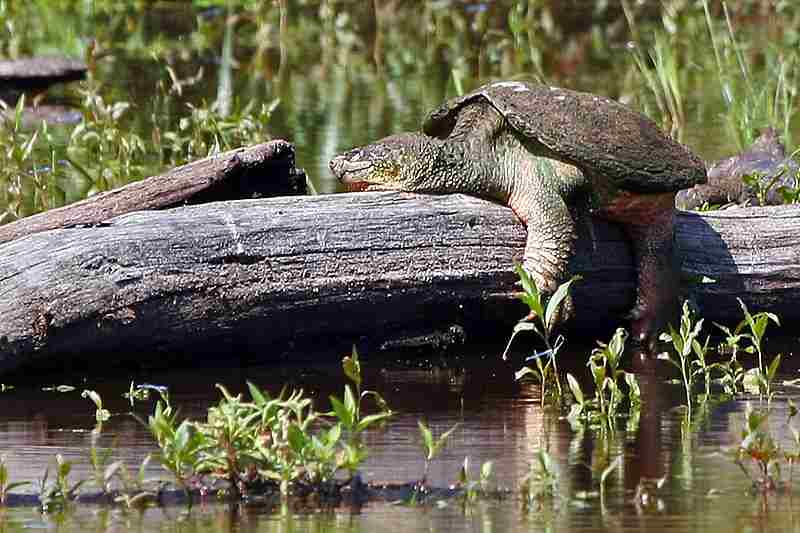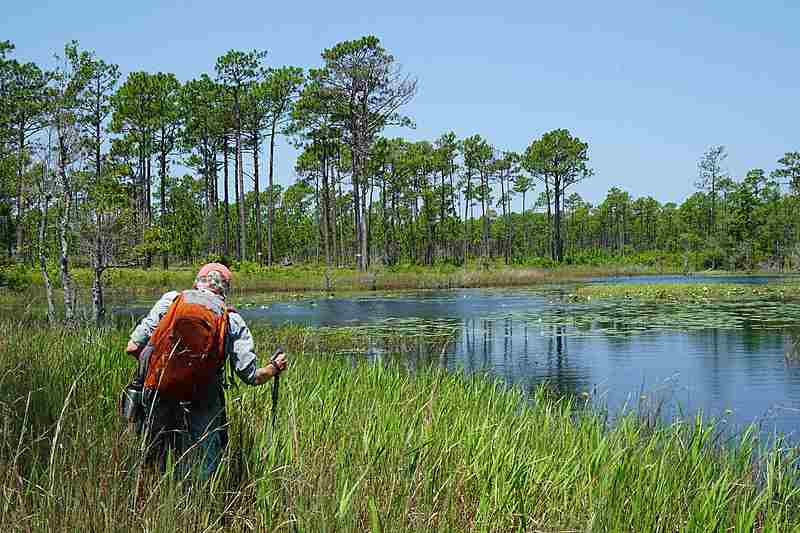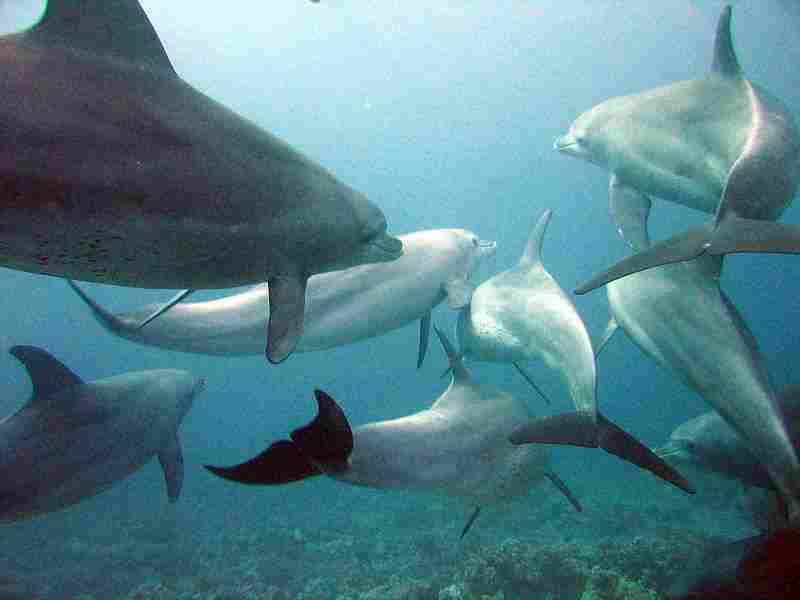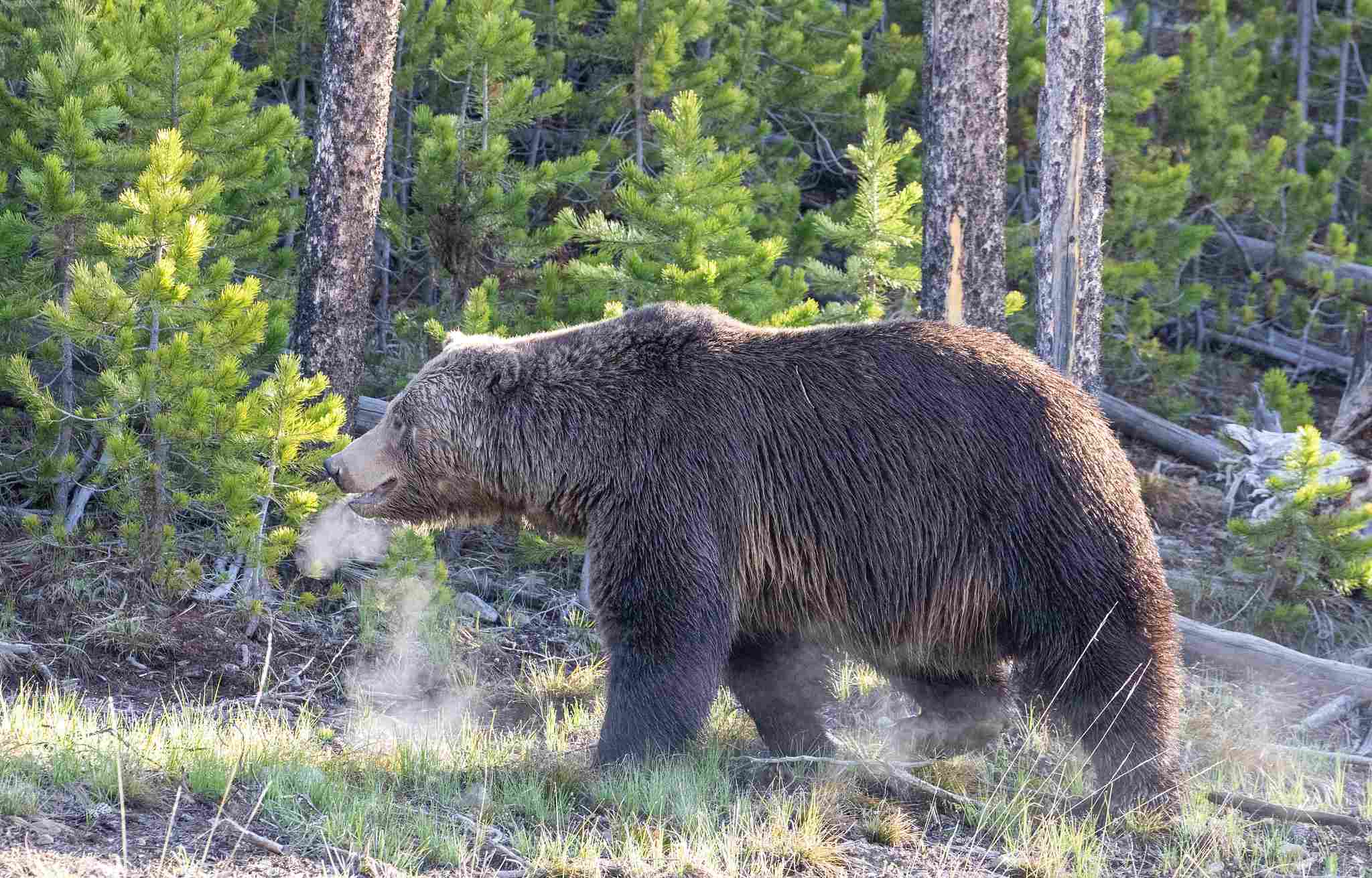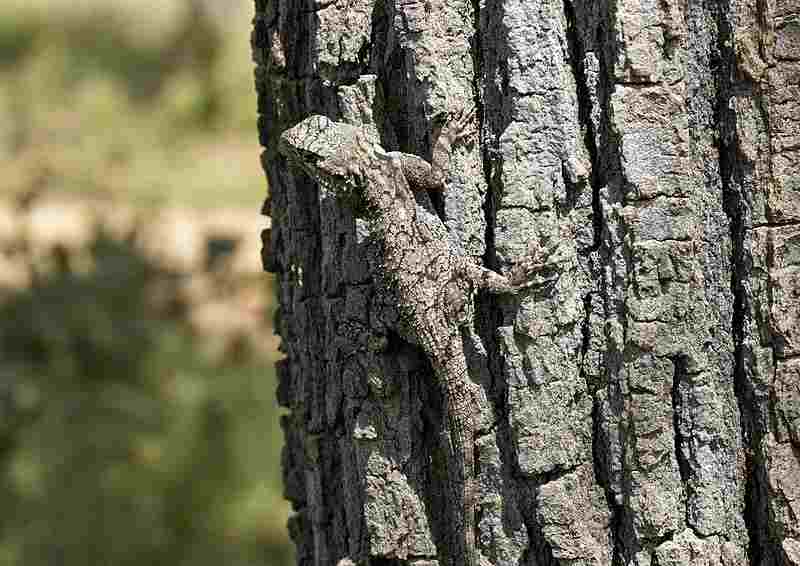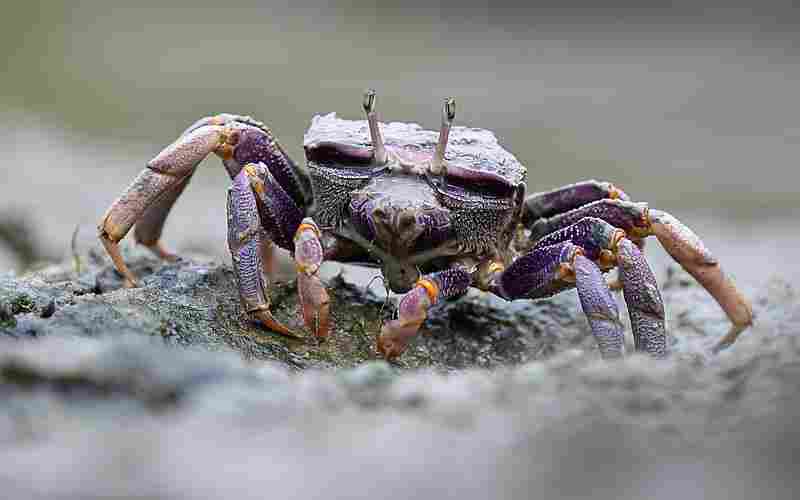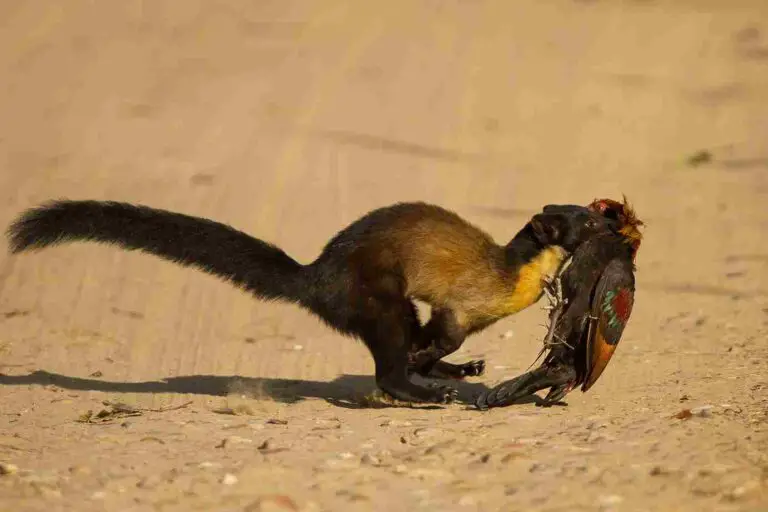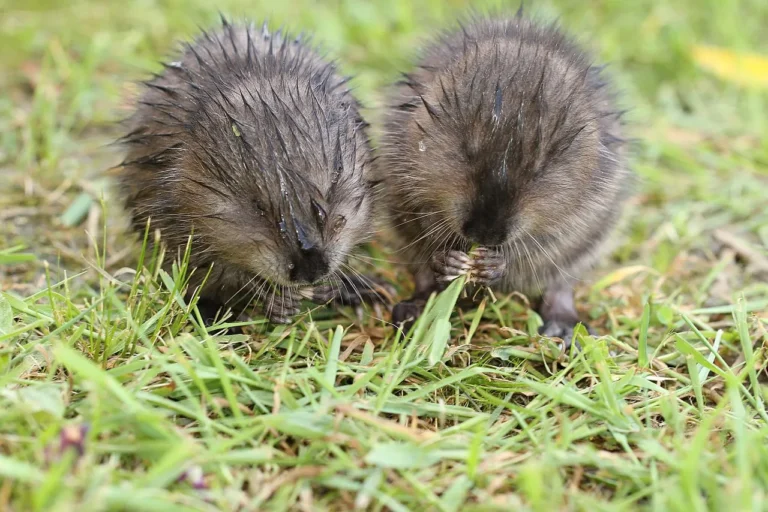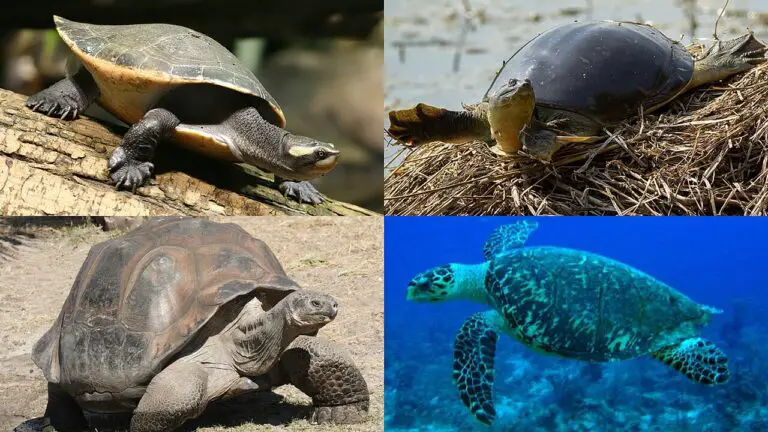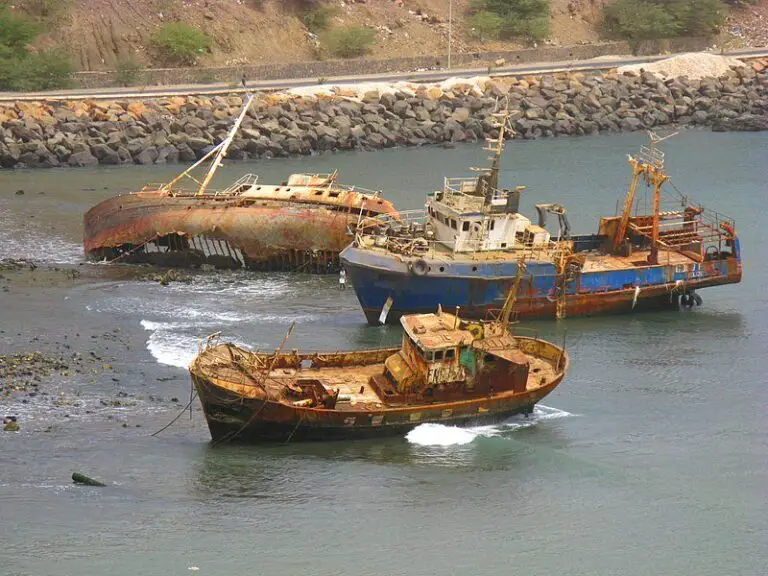11 Salt Marsh Biotic Factors and Their Importance
Salt marsh biotic factors are; autotrophs, herbivores, carnivores, omnivores, decomposers, mutualism, commensalism, parasitism, predation, competition, and adaptation.
This article discusses salt marsh biotic factors and their importance/contributions, as follows;
1). Autotrophs in a Salt Marsh (as one of the Salt Marsh Biotic Factors)
Autotrophs, also referred to as primary producers, are fully involved in the ecological dynamics of salt marsh ecosystems.
These ecosystems, which occur at the interface of land and sea, are characterized by unique abiotic conditions, that include tidal fluctuations, salinity variations, and distinctive trends of nutrient availability [16].
Autotrophs in salt marshes are represented mainly by various plant species that have adapted to these dynamic conditions.
Contributions of Autotrophs to the Salt Marsh Ecosystem
Autotrophs contribute to the salt marsh ecosystem through biomass production, nutrient recycling, sediment stabilization, carbon sequestration, as well as habitat and biodiversity support.
Biomass production is achieved by autotrophs through the process of photosynthesis.
These organisms transform solar energy into chemical energy in the form of organic compounds.
The photosynthetic process of energy conversion, leads to the production of biomass, which constitutes the foundation of the salt marsh food web.
Salt marsh plants like sedges, rushes and cordgrasses (Spartina spp.), are well adapted to tolerate hydrological fluctuations, which feature both dry conditions and saltwater inundation/flooding. Their above-ground biomass serves as habitat, shelter, and food for numerous organisms.

Nutrient cycling is also supported by autotrophs within the salt marsh ecosystem. These organisms take up nutrients from the surrounding water and sediment, and incorporate them into their tissues.
As plants grow and subsequently die, their organic matter is converted to a source of nutrients for decomposers, which help to recycle the inherent nutrients back into the ecosystem.
Nutrient cycling is and essential function for maintaining the productivity and continuity of the salt marsh.
The root systems of autotrophs, such as cordgrasses, have a critical role to play in stabilizing sediment within the salt marsh. These roots bind particles of soil, and prevent erosion caused by wave action and tidal currents [7].
Salt marsh plants form a dense network of roots that helps build and maintain the structure of the marsh, provides habitat for various organisms, and contributes to shoreline protection.
Marsh autotrophs contribute to the carbon cycle through sequestration, which is the process whereby carbon dioxide from the atmosphere is captured and stored.
Plants in a salt marsh, store carbon in their tissues, and contribute to the accumulation of organic matter in the soil. This not only assists in mitigating climate change by reducing atmospheric carbon dioxide (greenhouse gas) levels, but also contributes to the long-term sustainability of the marsh ecosystem.
Critical habitat is provided by plants in salt marshes, for various organisms. The intricate structures formed by stems, leaves, and roots creates hiding places, nesting sites, and feeding grounds for a wide range of diverse species, that include birds, insects, crustaceans, and fish.
The presence of autotrophs supports overall biodiversity and ecosystem resilience.
2). Herbivores in a Salt Marsh
Herbivores are primary consumers, and also contribute to the dynamics of salt marsh ecosystems.
Salt marshes are themselves complex and dynamic environments that bridge the gap between terrestrial and aquatic ecosystems.
Their complexity enables them play host to herbivores, that contribute to the intricate balance of these systems.
Contributions of Herbivores to the Salt Marsh Ecosystem
Herbivores contribute to the salt marsh ecosystem as a vital biotic component, through plant population-control, habitat modification/ecosystem engineering, nutrient cycling, trophic interactions, indirect effects on abiotic factors, as well as influence on plant resilience an evolution.
Plant population control occurs when herbivores, including various species of insects, crustaceans, mollusks, and vertebrates, feed on plant materials within the salt marsh.
By consuming plants, these herbivores help control plant population sizes [10]. The grazing pressure which they exert, prevents certain plant species from becoming excessively dominant through overgrowth and overpopulation, which can lead to a more diverse and healthy plant community.

Feeding activities of herbivores can facilitate changes in plant composition and density, which cumulatively alter the structure of the salt marsh habitat.
For example, herbivory can create open patches of relatively-low density, in areas with dense vegetation, thereby providing space for other species to establish and grow. Such structural changes impact the distribution and abundance of both plant and animal species.
Nutrient cycling is indirectly facilitated by herbivores within the salt marsh ecosystem. By feeding on plants, these herbivores release the nutrients contained in plant tissues through excretion and biodegradation (of their waste, and their remains after death).
The released nutrients become available for uptake by other plants and microorganisms, thereby influencing overall productivity of the ecosystem.
Trophic interactions that make up the salt marsh food web/chain/energy pyramid, rely on herbivores as key contributors.
Herbivores constitute the link between primary producers (plants) and non-herbivorous consumers in higher trophic levels (carnivores and omnivores). The presence and activities of these herbivores influence the abundance and behavior of predators, and shape the entire structure of the ecosystem.
Feeding activities of herbivores can also indirectly affect abiotic factors in the salt marsh ecosystem.
For instance, changes in plant composition and structure due to herbivory, can affect soil moisture, temperature, and light penetration. These alterations in abiotic conditions have cascading effects on other biotic components, and can be very influential when they occur on a large scale.
Herbivory exerts selective pressure on plants, and drives adaptations that enhance the resilience of these plants against herbivores [11].
Over time, salt marsh plants may evolve traits such as thorns, chemical defenses, or rapid regrowth to deter/withstand herbivores. These adaptations contribute to the dynamic co-evolutionary relationship between plants and animals.
Overview of Herbivores in The Salt Marsh Ecosystem
Herbivores in a salt marsh ecosystem; control plant populations, modify habitat structure, contribute to nutrient cycling, influence trophic interactions, indirectly affect abiotic factors, and drive plant adaptation, resilience and coevolution.
Herbivory in salt marshes is influenced by abiotic factors such as environmental conditions, which may interact with herbivore activities to shape plant communities and ecosystem dynamics.
Herbivores indirectly influence abiotic factors by altering plant composition and structure, which in turn can impact temperature, humidity, soil moisture, and light penetration. These changes may have ripple effects on the entire ecosystem.
3). Carnivores in a Salt Marsh (as one of the Salt Marsh Biotic Factors)
Carnivores are the predators in the salt marsh ecosystem, and help in maintaining the balance and health of their unique coastal habitat.
Salt marshes are rich and notably productive environments, and provide various ecological functions, some of which are controlled by these carnivores.
Contributions of Carnivores to the Salt Marsh Ecosystem
Carnivores contribute to the salt marsh ecosystem as an important biotic component, through trophic regulation, population control, cascade effects, disease regulation, community structuring, ecosystem indexing, and nutrient cycling.
Examples of carnivores in the salt marsh/wetland are birds, reptiles, mammals and amphibians like, marsh hawk, heron, salt marsh snake (Nerodia clarkii), weasel, and bullfrog. These species consume other marsh organisms in various capacities.
Trophic regulation by carnivores, mainly influences the organic populations of lower trophic levels, including herbivores and lower predators.
This regulatory effect is a product of carnivorous feeding, and helps prevent overgrazing by herbivores on plant populations, which, by inference, maintains the ecological integrity, and diversity of the marsh vegetation.
Population control can be attributed to carnivores, which help regulate the populations of other animals (on which they feed) in the salt marsh.
By preying on smaller organisms, they prevent overabundance of competitive species, thereby preventing potential imbalances and other harmful consequences that could disrupt the stability of the ecosystem.
Salt marsh carnivores can initiate trophic cascade effects; whereby changes in the abundance of organisms (in this case; carnivores) can influence multiple trophic levels [15]. For instance, an increase in carnivore populations can result in a decrease, in the populations of herbivores, which can then lead to increased vegetation growth.
Biotic interaction is controlled by carnivores, as they influence the adaptation (including behavior) and spatial distribution of their prey species.
This influence can lead to changes in prey species' foraging patterns, habitat selection, and movement. Interactions resulting from the influence of carnivores can have widespread effects on the entire ecosystem.
Salt marsh carnivores can help regulate disease dynamics within the ecosystem. By controlling prey populations (including feeding on diseased and weak individuals), they indirectly reduce the spread of diseases that might otherwise affect these prey populations.
The presence of carnivores in the salt marsh, can shape its species richness, composition and diversity. Their interactions with prey species can influence the characteristics of their populations, contributing to the overall complexity and sustenance of the ecosystem.
Some salt marsh carnivores may function as keystone species, so that they exert disproportionate influence on the ecosystem in comparison to their abundance [12]. The presence of these carnivores, maintains the integrity of the ecosystem structure, and often prevents the dominance of a single species.
Nutrient cycling is facilitated by carnivores through their control over the populations of herbivores that impact plant growth-patterns and conditions. Their control over herbivorous populations, indirectly influences nutrient availability and cycling within the marsh ecosystem.
Overview of Carnivores in the Salt Marsh
Carnivores in the salt marsh include animals like killifish, rails, herons, salt marsh snakes, bullfrogs, marsh hawks, and various other predators that feed on smaller animals in the marsh habitat.
Carnivores contribute to the salt marsh ecosystem by regulating trophic levels, controlling populations, initiating trophic cascades, influencing biotic interactions, regulating disease dynamics, shaping community structure, acting as keystone species, and contributing to nutrient cycling.
4). Omnivores in a Salt Marsh
Omnivores (like some crabs) are an important biotic component of the salt marsh ecosystem, owing to their ability to consume both plant and animal materials [6].
Their dietary flexibility allows these organisms to occupy a unique niche, from where they influence various aspects of the ecosystem's composition, functioning, and temporal trends.
An example of omnivores in the salt marsh is the snapping turtle, which feed on insects, worms, amphibians, snakes, crayfish, birds, fish, carrion, and small mammals.

Contributions of Omnivores to the Salt Marsh Ecosystem
Omnivores contribute to the salt marsh ecosystem through nutrient cycling, trophic regulation, influence on plant populations, seed dispersal, biotic interactions, trophic cascades, and community resilience.
Omnivores play an effective role in nutrient cycling simply by consuming a wide range of food materials. As they feed on both plants and animals, they facilitate nutrient and energy transfer through different trophic levels, thereby contributing to the overall cycling of essential elements within the ecosystem.
By consuming plant material as well as herbivorous animals, omnivores help regulate the populations of prey species, just as carnivores. This trophic regulation effect, prevents overgrazing by herbivores on plant populations (as well as other forms of resource depletion) and maintains the balance of resources between various trophic levels.
As implied earlier, omnivores can exert influence upon the distribution and abundance of plant species in the salt marsh. Their tendency to feed on both plants and animals can indirectly impact plant competition and growth patterns, thereby shaping the vegetation composition.
Some omnivores are instrumental in seed dispersal as they consume seed-bearing fruits, inadvertently transporting seeds to different locations [8]. This function can influence plant colonization and help maintain diversity in plant communities across the ecosystem.
Biotic interactions in a salt marsh also involve omnivores, which interact with both herbivores and carnivores, and affect the dynamics of these trophic levels.
Their presence can affect the behavior and populations of diverse species, contributing to the complexity of the salt marsh food web.
Trophic cascades effects are set off as omnivores interact with organisms in multiple trophic levels, owing to their versatile feeding behavior. Changes in omnivore populations can result in shifts, in the abundance of consumers and producers, ultimately affecting the entire ecosystem structure.
Omnivores contribute to the resilience of the ecosystem by diversifying their diet and adapting to multiple food sources. This adaptability can help to stabilize the ecosystem in the face of changes or disturbances.
Lastly, omnivores exert top-down control on lower trophic levels. Their predation on smaller/weaker species can prevent overgrazing, promote the health of plant communities and maintain the overall ecosystem balance.
5). Decomposers in a Salt Marsh (as one of the Salt Marsh Biotic Factors)
Decomposers are a vital biotic factor in the salt marsh ecosystem, and responsible for degrading organic matter and recycling nutrients.
They are mostly microorganisms and detritivorous invertebrates, which play a central role in the process of decomposition, and facilitate the return of essential nutrients to the ecosystem.
Examples of decomposers in a salt marsh are; bacteria, fungi; and detritivores like fiddler crab and crayfish. Through their activities, these organisms facilitate the breakdown of waste and remains of salt marsh species.
Contributions of Decomposers to the Salt Marsh Ecosystem
Decomposers contribute to the salt marsh ecosystem through nutrient recycling, detritus, energy transfer facilitation, soil enrichment, detoxification, carbon cycling, and ecosystem stabilization.
Nutrient recycling is initiated by decomposers that break down plant material, animal remains, and detritus, into simpler products. This breakdown process releases nutrients like nitrogen, phosphorus, and carbon back into the soil and water, and makes them available for uptake by plants and other organisms.
Dead plant remains and other organic materials, accumulate in salt marshes. When decomposers break down these materials, they prevent excessive accumulation that could otherwise have harmful effects, and ensure that nutrients are cycled back into the ecosystem.
Decomposers in a salt marsh, are essential for transferring energy from organic remains/waste, to higher trophic levels. As they break down detritus, these organisms release bioenergy and nutrients that are reused by plants, herbivores, and eventually carnivores.
The biodegradation process facilitated by decomposers, contributes to soil conservation and enrichment. Breakdown of organic matter results in the formation of humus, a dark, nutrient-rich component of soil that enhances its fertility and water-holding capacity [14].
Decomposers can contribute to the detoxification of the environment by causing the breakdown of complex organic molecules, including pollutants [9]. This helps to mitigate the severity and effects of pollution in the ecosystem.
Carbon cycling benefits from the activities of decomposers that influence the dynamics of carbon in organic compounds. The decomposition process releases carbon dioxide into the atmosphere, or converts it into more stable forms, thereby affecting atmospheric carbon concentrations.
The oxygen cycle can also be affected by decomposers, several of which require oxygen for their metabolism.
As earlier stated, by breaking down organic matter, decomposers make nutrients more accessible to plants. This supports plant growth, which in turn provides microhabitat and food for other organisms in the salt marsh habitat.
The efficient decomposition of dead organic matter by decomposers, helps maintain a healthy balance within the ecosystem. Without decomposers, organic matter will accumulate, leading to imbalances, largescale pathogen growth, and nutrient deficiencies.
Overview of Decomposers in a Salt Marsh
Decomposers in the salt marsh ecosystem include bacteria and fungi.
They are responsible for the breakdown of plant material, animal remains, and partially degraded detritus, releasing nutrients and energy back into the ecosystem.
Functions of decomposers include nutrient cycling, energy transfer, and overall ecosystem sustenance in salt marshes.
These organisms ensure the efficient utilization of organic resources, contribute to soil fertility, and support the diverse array of organisms that rely on the marsh ecosystem for survival.
6). Mutualism in a Salt Marsh
Mutualism is a distinctive ecological interaction that occurs in salt marsh ecosystems, typically involving different species that interact in a way that benefits all participants.
Mutualistic relationships are important components of the ecosystem, and contribute to its stability, diversity, and overall wellbeing. In a salt marsh environment, various mutualistic interactions can be observed, each one of these playing a unique role in shaping the dynamics of the ecosystem.
Example of Mutualism in the Salt Marsh Ecosystem
An example of mutualism in salt marshes is the interaction between ribbed mussels (Geukensia demissa) and cordgrass (Spartina alterniflora). This interaction showcases the interconnectedness of organisms and their cooperative contributions to the ecosystem.
Mutualism between ribbed mussels and cordgrass is known to facilitate the removal and cycling of nitrogen [4], growth of cordgrass, provision of refuge and protection, as well as enhancement of ecosystem health.
Ribbed mussels feed on particulate matter, including planktonic materials, from the water column. As they filter-feed, they absorb nitrogen from the water, which is then transferred to the marsh sediments through their excretion and waste.
The nitrogen released by ribbed mussels into sediments, serves as a source of nutrient for cordgrass; which is a dominant salt marsh plant. Cordgrass utilizes this nitrogen to fuel its own growth, leading to increased biomass production.
In turn, cordgrass provides a safe and stable habitat for ribbed mussels. The dense structure of cordgrass stands offers protection from predators and helps to mitigate heat stress for the mussels during periods of exposure.
The mutualistic interaction between ribbed mussels and cordgrass generally contributes to the overall productivity and stability of the salt marsh ecosystem. Increased cordgrass growth enhances the ability of this habitat to stabilize sediments, resist erosion, and support diverse plant and animal communities.
Importance of Mutualism in Salt Marshes
Mutualism is important in the salt marsh ecosystem because it promotes species coexistence, nutrient cycling, habitat structuring, and ecologic resilience.
Species coexistence is enhanced by mutualism, through enabling organisms to exploit unique niches within the ecosystem without direct competition. This dynamic contributes to the overall biodiversity of the salt marsh.
Mutualistic interactions often involve the exchange of nutrients [3], as seen in interaction between the ribbed mussel and cordgrass. This nutrient cycling dynamic helps maintain soil fertility and supports primary productivity.
The structure provided by one species can serve as a microhabitat or refuge for another, promoting organic survival and ecosystem stability.
Lastly, mutualistic interactions enhance the resilience of the ecosystem, by fostering species that can collectively withstand environmental stressors.
7). Commensalism in a Salt Marsh (as one of the Salt Marsh Biotic Factors)
Commensalism is a type of ecological interaction in which one participant or species benefits from the association while the other species is generally unaffected.
In a salt marsh ecosystem, commensal relationships can be observed among various organisms. These relations highlight their interconnected roles and contributions to the overall balance of the biome.
Example of Commensalism in A Salt Marsh
An illustrative example of commensalism in a salt marsh is the interaction between the black-clawed mud crab (Panopeus herbstii) and snapping shrimp (Alpheus heterochaelis) [13].
The black-clawed mud crab constructs and maintains burrows within the salt marsh habitat, which offer shelter and protection to the crab. These burrows also serve as a microhabitat for snapping shrimp, which take advantage of the shelter provided by the crab, without the latter being significantly benefited or harmed.
Snapping shrimp benefit from the presence of crab burrows as a shelter against predators and harsh environmental conditions such as the impact of tidal forces. The burrows provide a safe space for the shrimp to inhabit.
The black-clawed mud crab is largely unaffected by the presence of snapping shrimp within its burrows. While the crab constructs and maintains the burrows, the presence of the shrimp does not significantly alter its lifestyle or well-being.
Contributions of Commensalism to the Ecosystem
Contributions of commensalism to the ecosystem include; habitat utilization, species diversity, and ecosystem stability.
Many commensal interactions provide participating organisms with microhabitats or shelters that they might not otherwise have access to. In this example, the snapping shrimp gain access to protective burrows that increase their survival and expand their intertidal range.
Commensal relationships enhance the diversity of species within the salt marsh ecosystem, as multiple species are able to coexist and share resources without direct competition.
Lastly, by utilizing existing structures or resources without negatively impacting the host organism, commensals contribute to the overall stability and continuity of the ecosystem.
Commensalism involves interactions between different biotic factors within the ecosystem. In the example mentioned, the black-clawed mud crab and snapping shrimp are both living organisms that are engaged in a commensal relationship.
8). Parasitism in a Salt Marsh
Parasitism is a type of symbiotic interaction where one organism, called the parasite, benefits at the expense of another organism, called the host.
In a salt marsh ecosystem, parasitism has a role to play in establishing/maintaining community dynamics and influencing species composition. Parasites that inhabit salt marshes, as well as their hosts and activities, contribute to the intricate web of relationships within this habitat.
Role of Parasites in Salt Marsh Ecosystems
The role of parasites in salt marsh ecosystems is based on their relevance to ecosystem analysis, host species wellbeing, biological performance and competition; biotic interactions, and population regulation.
Salt marshes provide an excellent ecosystem for studying the role of parasites in community dynamics. They are inhabited by a diverse community of parasites, particularly trematodes [1], that have complex life cycles involving different hosts such as mollusks, fish, and birds. These life cycles are aligned to the environmental and ecological conditions of salt marshes.
Another contribution of parasites is their impact on the species composition of their hosts.
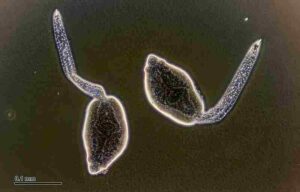
Parasites can have a preferential effect on certain salt marsh species, leading to changes in the composition of the zonal communities within the marsh. Some host species may be more susceptible to parasitic attacks, which can influence the distribution, performance and abundance of such species.
The intricate network of biotic interactions within the salt marsh ecosystem is supported by the presence and activities of parasites.
Their interactions with host species can result in a cascade of effects throughout the ecosystem, influencing the populations of not only the host species but also their predators and prey.
As this implies, parasites can act as regulators of host populations, and are capable of limiting the growth of certain species [2] This can prevent any one species from becoming excessively dominant in the ecosystem, and promotes biodiversity within the marsh.
Overview of Parasites and Parasitism in the Salt Marsh
Trematode parasites are one of the prominent types of parasites that live in salt marshes.
These parasites are characterized by complex life cycles that involve multiple host species. The rich food webs and diverse hosts in salt marshes provide an ideal environment for the survival and proliferation of these parasites.
While it is often considered a negative interaction due to its harm to the host, parasitism is an integral part of the salt marsh ecosystem, and contributes to the complex interactions and dynamics that characterize this unique habitat.
9). Predation in a Salt Marsh (as one of the Salt Marsh Biotic Factors)
Predation can be described as a fundamental ecological process, and contributes immensely to the trophic structure of a salt marsh ecosystem.
Predators in a salt marsh interact with various prey organisms, by which they influence population dynamics, species interactions, and overall ecosystem wellbeing.
Role of Predation in Salt Marsh Ecosystems
The role of predation in a salt marsh ecosystem can be summarized to include; prey population regulation, influence on species interactions, impact on trophic levels, biodiversity promotion, and contribution of ecologic resilience.
Predators function as natural regulators of prey populations. By feeding on prey species, predators prevent any overpopulation and excessive dominance of any single prey species, so that they help maintain population equilibrium within the ecosystem.
This prevents some of the negative outcomes of overpopulation, including excessive competition, resource depletion and low survival rates.
The presence and activities of predators, can affect the distribution and behavior and prey species. Prey may alter their foraging patterns or habitat preferences in avoidance of areas where predators are more abundant [5], resulting in complex interactions and dynamic trends of species' spatial distribution within the marsh.
Predation influences the trophic structure of the salt marsh ecosystem. It impacts the composition of different trophic levels as well as the flow of energy through the food web. The presence of apex predators can have cascading effects on organisms in lower trophic levels, including autotrophs.
Biodiversity is promoted through predation, which contributes to the diversity of species within the salt marsh ecosystem. By controlling the abundance of prey, predators prevent any one species from dominating the biome and allow for coexistence of diverse organic groups.
Predators can play a role in increasing the resilience of the salt marsh ecosystem to disturbances. Their interactions with prey species can facilitate adaptation, and affect the response of the ecosystem to environmental changes or perturbations.
Overview of Predation in the Salt Marsh
Predators in a salt marsh ecosystem are diverse and can include avian, land-dwelling, and aquatic animals like; marsh hawk, egret, pelican, bullfrog, (adult) spotted seatrout, and weasel.
These organisms play a key role in shaping the salt marsh ecosystem by regulating prey populations, influencing species interactions, and maintaining a balanced trophic structure.
Their presence and interactions contribute to the complex dynamics that make up this unique and diverse habitat.
10). Competition in a Salt Marsh
Competition is another critical ecological process/interaction that occurs within the complex environment of a salt marsh ecosystem.
It is characterized by the struggle between organisms for limited resources such as space, sunlight, water, and nutrients.
In a salt marsh, competition plays a key role in shaping community structure, influencing species distribution, and promoting overall ecosystem stability and diversity.
Role of Competition in Salt Marsh Ecosystems
Salt marshes are often characterized by limited resources due to the dynamic conditions they experience, including tidal fluctuations and salinity changes.
Competition among different plant and animal species for these resources is therefore intense. This competition fosters adaptations that allow species to efficiently utilize the available resources.
Species distribution is influenced by competition across different zones within a salt marsh.
Certain species are better adapted to specific abiotic conditions, so that their resilience and competitive ability help determine their success in particular zones.
Although competition can lead to the exclusion of less competitive species [17], it can also promote biodiversity by creating multiple, specialized niches within the ecosystem. Species that have adopted different resource acquisition strategies can minimize direct competition, and coexist by utilizing various subsets of available resources.
The intense competition in a salt marsh environment can drive the evolution of traits that enhance a species' competitive capacity. This can include adaptations for efficient resource uptake, tolerance to variable salinity conditions, and strategies to avoid or defeat competitors.
Competition works together with other biotic and abiotic factors to structure salt marsh communities. Depending on the intensity of competition and the availability of resources, certain species may dominate while others may be limited in their reproduction and distribution.
Lastly, competition is a key driver of ecological succession in salt marshes. As conditions change over time, competitive interactions lead to shifts in species composition, which in turn influence the entire ecosystem's dynamics.
11). Adaptation in a Salt Marsh (as one of the Salt Marsh Biotic Factors)
Adaptation is a fundamental phenomenon or process that enables organisms to survive and thrive under the dynamic conditions of a salt marsh ecosystem.
Salt marshes are unique and sometimes challenging environments, which are susceptible to fluctuating salinity levels, tidal inundation, and occasional harsh weather conditions. Organisms that live in these habitats have developed specialized adaptations that enable them to effectively utilize available resources and tolerate the stresses of their environment.
Key Adaptations In the Salt Marsh Ecosystem
Adaptations of organisms in the salt marsh ecosystem include; halotolerance, anoxia tolerance, specialized root systems, reproductive strategies, effective decomposition mechanisms, specialized behavior, camouflage and defense. These are briefly discussed as follows;
Salt marsh plants and animals have developed mechanisms to tolerate high levels of salinity, known as halotolerance. Some plants have salt-excreting glands that are used to eliminate excess salt, while animals may have evolved specialized physiological structures and processes to regulate their internal salt levels.
The low oxygen availability in marsh sediments due to frequent inundation, creates need for anaerobic respiration-adaptations. Many marsh plants and animals have developed adaptations to thrive in anoxic conditions, such as specialized root structures that allow for efficient gas exchange.

Marsh plants often possess extensive root systems that help stabilize sediments, mitigate erosion, and provide access to nutrients in the substrate. These adaptations are crucial for the survival of plants in the constantly changing tidal environment.
Some salt marsh plants have evolved reproductive strategies that allow them to survive and disperse seeds by floating on/in water or being carried by tides; thereby ensuring their survival in the hydrologically-dynamic landscape.
Decomposers such as bacteria and fungi in salt marshes, have adapted features, and anaerobic digestion mechanisms to break down organic matter in anoxic sediments, contributing to nutrient cycling within the ecosystem.
Animals in the salt marsh may exhibit behaviors like burrowing to escape tidal inundation, shelter-seeking during harsh weather, or adjusting their feeding patterns based on tidal cycles.
Also, some marsh animals have developed distinctive coloration and patterns that provide effective camouflage in the marsh environment, concealing them from prey and/or protecting them from predators. Others have evolved defensive behaviors or structures, like spines or toxic secretions, to deter potential threats.
Contributions of Organic Adaptation to the Salt Marsh Ecosystem
Adaptations contribute significantly to the overall health and stability of the salt marsh ecosystem.
They enable organisms to effectively compete for resources, avoid predation, and reproduce successfully in spite of the challenging conditions. Specialized traits developed in the course of adaptation help to maintain the intricate balance of species interactions, nutrient cycling, and energy transfer within the ecosystem.
Conclusion
Salt marsh biotic factors are;
1. Autotrophs
2. Herbivores
3. Carnivores
4. Omnivores
5. Decomposers
6. Mutualism
7. Commensalism
8. Parasitism
9. Predation
10. Competition
11. Adaptation
References
1). Altman, I.; Byers, J. (2014). "Large-scale spatial variation in parasite communities influenced by anthropogenic factors." Ecology 95(7):1876-87. Available at: https://doi.org/10.1890/13-0509.1. (Accessed 29 August 2023).
2). Anderson, R. M. (1978). "The regulation of host population growth by parasite species." Parasitology 76(2):119-57. Available at: https://doi.org/10.1017/S0031182000047739. (Accessed 29 August 2023).
3). Bedgood, S. A.; Mastroni, S.; Bracken, M. E. S. (2020). "Flexibility of nutritional strategies within a mutualism: food availability affects algal symbiont productivity in two congeneric sea anemone species." The Royal Society, Proceedings of the Royal Society B 287(1940):20201860. Available at: https://doi.org/10.1098/rspb.2020.1860. (Accessed 29 August 2023).
4). Bilkovic, D. M.; Mitchell, M. M.; Isdell, R. E.; Schliep, M.; Smyth, A. R. (2017). "Mutualism between ribbed mussels and cordgrass enhances salt marsh nitrogen removal." Ecosphere, Volume 8, Issue 4 e01795. Available at: https://doi.org/10.1002/ecs2.1795. (Accessed 29 August 2023).
5). Bracis, C.; Wirsing, A. J. (2021). "Prey Foraging Behavior After Predator Introduction Is Driven by Resource Knowledge and Exploratory Tendency." Frontiers in Ecology and Evolution 9:698370. Available at: https://doi.org/10.3389/fevo.2021.698370. (Accessed 29 August 2023).
6). Buck, T. L.; Breed, G. A.; Pennings, S. C.; Chase, M. E.; Zimmer, M.; Carefoot, T. H. (2003). "Diet choice in an omnivorous salt-marsh crab: Different food types, body size, and habitat complexity." Journal of Experimental Marine Biology and Ecology 292(1):103-116. Available at: https://doi.org/10.1016/S0022-0981(03)00146-1. (Accessed 29 August 2023).
7). De Battisti, D.; Fowler, M. S.; Jenkins, S. R.; Skov, M. W.; Rossi, M.; Bouna, T. J.; Neyland, P.; Griffin, J. (2019). "Intraspecific Root Trait Variability Along Environmental Gradients Affects Salt Marsh Resistance to Lateral Erosion." Frontiers in Ecology and Evolution 7. Available at: https://doi.org/10.3389/fevo.2019.00150. (Accessed 29 August 2023).
8). Karimi, S.; Hemami, M.-R.; Tarkesh, M.; Baltzinger, C. (2019). "Endozoochorous dispersal by herbivores and omnivores is mediated by germination conditions." Available at: https://doi.org/10.21203/rs.2.15402/v2. (Accessed 29 August 2023).
9). Maqsood, Q.; Sumrin, A.; Waseem, R.; Hussain, M.; Imtiaz, M.; Hussain, N. (2023). "Bioengineered microbial strains for detoxification of toxic environmental pollutants." Environmental Research 227(2):115665. Available at: https://doi.org/10.1016/j.envres.2023.115665. (Accessed 29 August 2023).
10). Maron, J.; Crone, E. (2006). "Herbivory: Effects on plant abundance, distribution and population growth." The Royal Society, Proceedings of the Royal Society B 273(1601):2575-84. Available at: https://doi.org/10.1098/rspb.2006.3587. (Accessed 29 August 2023).
11). Perkovich, C.; Ward, D. (2022). "Differentiated plant defense strategies: Herbivore community dynamics affect plant–herbivore interactions." Wiley, Ecosphere 13(2). Available at: https://doi.org/10.1002/ecs2.3935. (Accessed 29 August 2023).
12). Power, M.; Tilman, D.; Estes, J. A.; Menge, B. A.; Bond, W. J.; Mills, L. S.; Daily, G.; Castilla, J. C.; Lubchenco, J.; Paine, R. T. (1996). "Challenges in the quest for keystones: Identifying keystone species is difficult-but essential to understanding how loss of species will affect ecosystems." BioScience 46(8):609-620. Available at: https://doi.org/10.2307/1312990. (Accessed 29 August 2023).
13). Silliman, B. R.; Layman, C. A.; Altieri, A. H. (2009). "Symbiosis between an Alpheid Shrimp and a Xanthoid Crab in Salt Marshes of Mid-Atlantic States, U.S.A." Journal of Crustacean Biology 23(Dec 2003):876-879. Available at: https://doi.org/10.1651/C-2410. (Accessed 29 August 2023).
14). Sofo, A.; Mininni, A. N.; Ricciuti, P. (2020). "Soil Macrofauna: A key Factor for Increasing Soil Fertility and Promoting Sustainable Soil Use in Fruit Orchard Agrosystems." Agronomy 10(4):456. Available at: https://doi.org/10.3390/agronomy10040456. (Accessed 29 August 2023).
15). Strickland, M. S.; Hawlena, D.; Reese, A.; Bradford, M. A.; Schmitz, O. J. (2013). "Trophic Cascade Alters Ecosystem Carbon Exchange." Proceedings of the National Academy of Sciences 110(27). Available at: https://doi.org/10.1073/pnas.1305191110. (Accessed 29 August 2023).
16). Struyf, E.; Dausse, A.; Van Damme, S.; Bal, K. D.; Gribsholt, B.; Boschker, H. T. S.; Middelburg, J. J.; Meire, P. (2006). "Tidal Marshes and Biogenic Silica Recycling at the Land-Sea Interface." Limnology and Oceanography 51(2):838-846. Available at: https://doi.org/10.4319/lo.2006.51.2.0838. (Accessed 29 August 2023).
17). Uchmański, J. (2021). "Can a More Variable Species Win Interspecific Competition?" Acta Biotheor. 2021 Dec;69(4):591-628. Available at: https://doi.org/10.1007/s10441-021-09408-0. (Accessed 29 August 2023).
